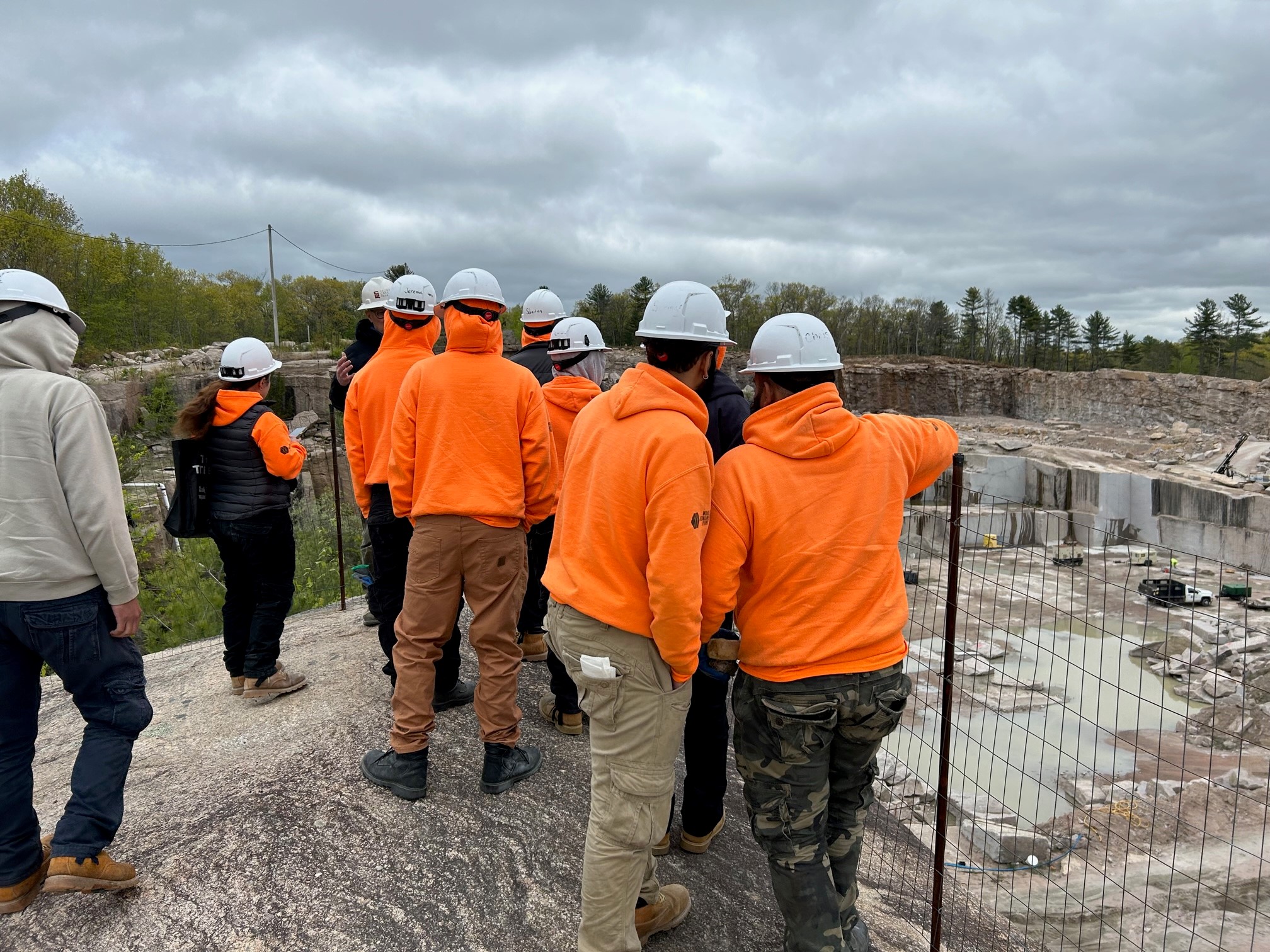
Stony Creek Quarry is the last of a dozen quarries that at one time lined the Connecticut coastline. Located in Branford, Connecticut the quarry grew out of the unusual pink granite underlying its soil. Stony Creek Quarry is said to be the home of the granite that made New York. Some of America’s most renowened architects and architectural firms, including McKim, Mead & White; Cass Gilbert; and Warren & Wetmore chose Stony Creek Quarry, which is still in operation, for its highly sought after pink granite, placing it in some of our nation’s most recognizable landmarks, such as Grand Central Terminal in Midtown Manhattan. In the Big Apple alone, the famous “Stony Creek pink” granite is a major structural element in the iconic sites of the Metropolitan Museum of Art, George Washington Bridge, and Bellevue Hospital. Throughout the city, too, you can find the legendary Stony Creek granite in public plazas and on sidewalks.
The distinctive pink hue of Stony Creek granite comes from deep concentrations of iron in the potassium feldspar (rock-forming minerals). This formed from the cooling and solidification of volcanic magma, which is rich in silicate minerals. The pink granite was likely discovered during the dramatic expansion of railroads in the U.S. as crews had to cut through ledges of granite when setting tracks.
On Thursday, May 4 our Bridge to Crafts Careers Masonry Restoration interns took a trip up to Stone Creek Quarry, where Darrel and Tom of the Stony Creek Quarry Corporation presented on developments in quarrying. Darrel and Tom introduced students to historic and modern quarrying methods, illustrating how the process of extracting stone from the ground has evolved over time. In this real-world environment, students learned how surface excavation for extracting rock is used to produce materials for construction and other uses.
In partnership with the World Monuments Fund and our social services partner The Door, Woodlawn’s Masonry Restoration program offers career and workforce development for underrepresented youth in our community. The one-of-a-kind program trains young people to care for historic structures as well as transitions them into the workforce, primarily careers in the masonry trade. To learn more about our Masonry Restoration program, please click here.
